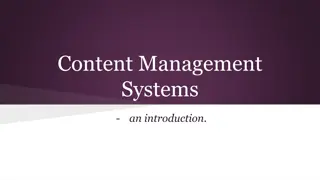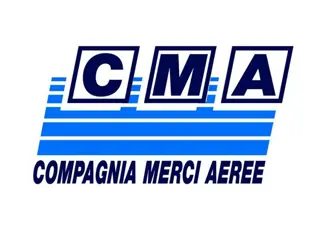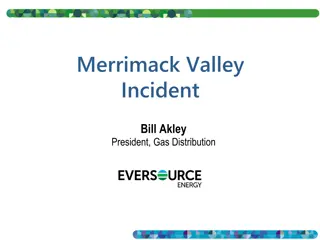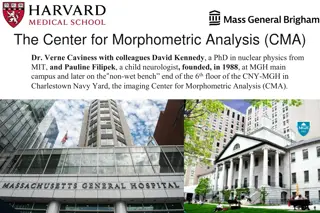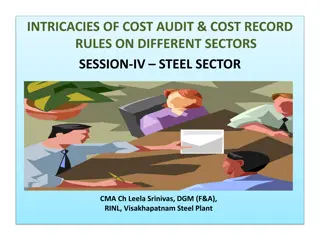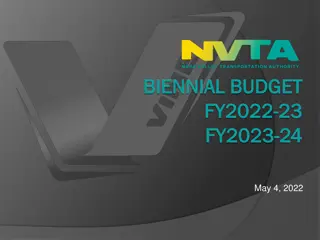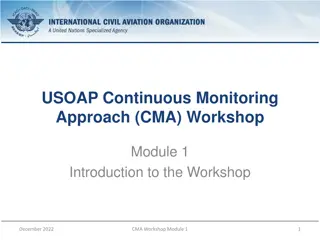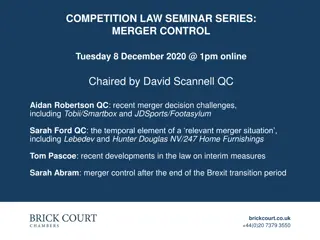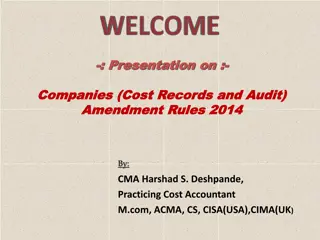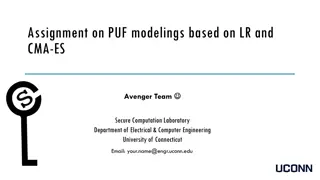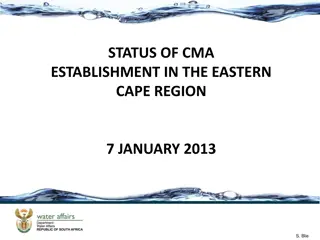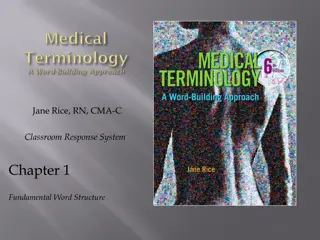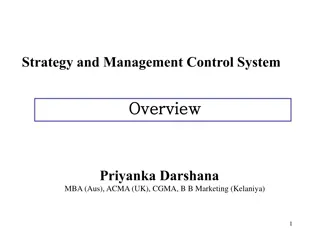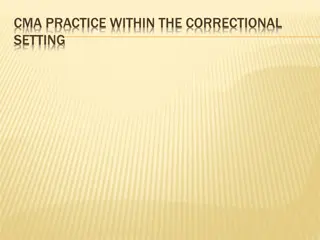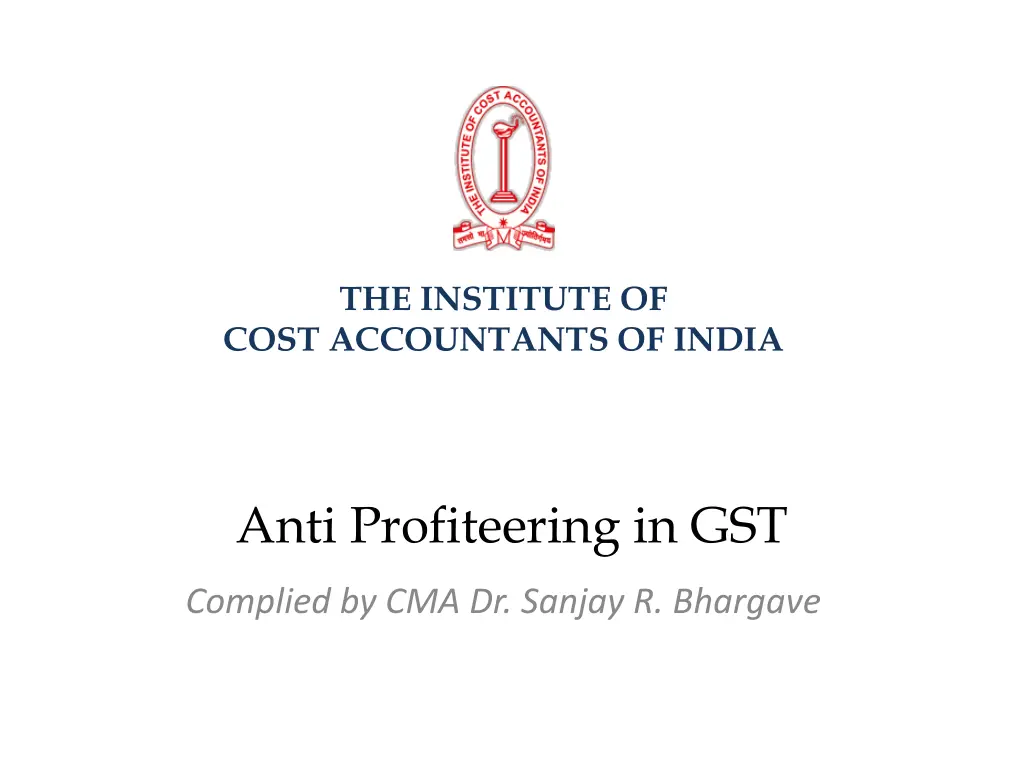
Understanding Anti-Profiteering Measures in Indian Tax Reforms
Learn about the anti-profiteering measures in the Indian tax system, including the need for passing on GST benefits to consumers, overcoming previous indirect tax defects, and the provisions of Section 171 of the CGST Act. Explore how tax reforms aim to create a fairer market for both businesses and consumers.
Download Presentation

Please find below an Image/Link to download the presentation.
The content on the website is provided AS IS for your information and personal use only. It may not be sold, licensed, or shared on other websites without obtaining consent from the author. If you encounter any issues during the download, it is possible that the publisher has removed the file from their server.
You are allowed to download the files provided on this website for personal or commercial use, subject to the condition that they are used lawfully. All files are the property of their respective owners.
The content on the website is provided AS IS for your information and personal use only. It may not be sold, licensed, or shared on other websites without obtaining consent from the author.
E N D
Presentation Transcript
THE INSTITUTE OF COST ACCOUNTANTS OF INDIA Anti Profiteering in GST Complied by CMA Dr. Sanjay R. Bhargave
TAX Reforms GST has replaced the tax system. Profit is fine, profiteering is not. Unique provision for anti-profiteering under GST Act to pass on the benefits arising out of GST to consumers and prevent undue profit to industry. Compliled by Dr. S. R. Bhargave 2
Major defects in earlier structure of indirect taxes India did not have a national market due to invisible barriers of Central Sales Tax, Entry Tax and State Vat and visible barriers of check posts. Central Sales Tax (CST) was payable @ 2% for every movement of goods from one State to other. Stock transfers or branch transfers were taxable, however set off was not available fully. Cascading effect of taxes could not be avoided due to CST and Entry Tax. State Vat was payable on Central Excise element also. Movement of goods from one State to other was not tax free due to entry tax. Compliled by Dr. S. R. Bhargave 3
Major defects in earlier structure of indirect taxes Millions of man-hours and truck hours were lost at check posts. Besides, huge corruption is involved. Central Government could not impose tax on goods beyond manufacturing level. State Government could not impose Service Tax. Conflict between goods or services- Twice levy of taxes on same transaction. Same transaction was taxed both by Central and State Government which created confusion, litigation and double taxation in many cases. Variations in VAT rates, forms and procedures among the states. Compliled by Dr. S. R. Bhargave 4
Anti Profiteering measure. Section 171 of the CGST Act, 2017 Section 171 of the Central Goods and Services Tax Act, 2017 provides for Anti Profiteering measure. As per Sub Section 1 of Sec 171 of CGST ACT, 2017 , Any reduction in rate of tax on any supply of goods or services or the benefit of input tax credit shall be passed on to the recipient by way of commensurate reduction in prices. It makes mandatory for every taxpayer to pass on the benefits arising out of following to the recipient of the goods or services or goods and services. Reduction of rate of tax on any supply of goods or services. Benefit of input tax credit. Compliled by Dr. S. R. Bhargave 5
Taxes to be subsumed Central Taxes Central Excise Duty, Additional Excise Duties on Goods of special importance, Textile CVD, SAD Excise Duty levied under the Medicinal and Toilet preparations (Excise Duties) Act, 1955. Service Tax, Central Surcharges and Cesses on Excise/Service tax States Taxes State VAT/Sales Tax, Purchase Tax Entertainment tax (unless it is levied by the local bodies), Central Sales tax (levied by Centre and collected by States) Octroi and Entry Tax, Luxury Tax, Taxes on lottery, betting and gambling. State Surcharges and Cesses Compliled by Dr. S. R. Bhargave 6
Cesses Abolished under GST 1. Education Cess on taxable services 2. Secondary & Higher Education Cess 3. Education Cess on excisable goods 4. Secondary & Higher Education Cess 5. The Mica Mines Labour Welfare Fund Act, 2016. 6. The Salt Cess Act, 1953 7. The Merchant Shipping Act, 1958 8. The Limestone and Dolomite Mines Labour Welfare Funds Act, 1972 [2 Cesses] 21.05.2016 9. The Tobacco Cess Act, 1975 10. The Iron Ore Mines, Manganese Ore Mines and Chrome Ore Mines Labour Welfare Cess Act, 1976 [3 Cesses] 01.06.2015 01.06.2015 01.07.2017 01.07.2017 21.05.2016 21.05.2016 21.05.2016 21.05.2016 21.05.2016 Compliled by Dr. S. R. Bhargave 7
Cesses Abolished under GST 11. The Textile Committee Act, 1963 12. The Cine-workers Welfare Cess Act, 1981 13. Cess on cement [by notification] 14. Cess on strawboard [by notification] 15. Research & Development Cess 16. The Rubber Act, 1947 Cess on Rubber 17. The Industries (Development and Regulation). Act, 1951, Cess on Automobile 18. The Tea Act, 1953 Cess on Tea 19. The Coal Mines (Conservation and Development) Act, 1974 Cess on Coal 20. The Bidi Workers Welfare Cess Act, 1976 Cess on Bidis 21.05.2016 21.05.2016 01.07.2017 01.07.2017 01.04.2017 01.07.2017 01.07.2017 01.07.2017 01.07.2017 01.07.2017 Compliled by Dr. S. R. Bhargave 8
Cesses Abolished under GST 21. The Water (Prevention and Control of Pollution) Cess Act, 1977 Cess levied on water Consumed by certain industries and by Local authorities. 22. The Sugar Cess Act, 1982, Cess on Sugar The Sugar Development Fund Act, 1982 23. The Jute Manufacturers Cess Act, 1983 Cess on jute goods manufactured or produced wholly or in part of jute 24. The Finance Act, 2010 Clean Energy Cess 25. The Finance Act, 2015 Swachh Bharat Cess 26. The Finance Act, 2016 Infrastructure Cess and Krishi Kalyan Cess 01.07.2017 01.07.2017 01.07.2017 01.07.2017 01.07.2017 01.07.2017 Compliled by Dr. S. R. Bhargave 9
Pre GST and Post GST Factors to be considered while comparing Major areas of benefit of input tax credit, which was not available under the subsumed tax laws: 1. 2. 3. 4. Central Sales Tax Stock Transfers to Depots. Entry Tax, Octroi , Local Body Tax (LBT) . Savings arising from non payment of Luxury Tax , Entertainment Tax. Non reversal of proportionate Cenvat credit under Rule 6(3) of Cenvat Credit Rules, 2004. Carrying out process which does not amount to manufacture. Input tax credit is available to wholesalers, retailer hotel, restaurants, outdoor caterers etc. Availability of credit on opening stock. Local Body Tax on job work Compliled by Dr. S. R. Bhargave 5. 6. 7. 8. 9. Continued 10
Pre GST and Post GST Factors to be considered while comparing 9. 10. Cenvat Credit on Furniture, Storage racks, Assets used in Office etc capitalized in books of account. 11. Admissibility of input tax credit on inputs (ED as well VAT) used by service providers. 12. Developers, Builders, Construction contractors. 13. Price Reduction on input supplies by vendors. 14. Refund of accumulated credit on account of inverted duty structure. 15. Duty paid on captively consumed goods. 16. Abolition of Cesses. 17. Transitional provisions Purchase Tax/ URD Compliled by Dr. S. R. Bhargave 11
Pre GST and Post GST Factors to be considered while comparing Adverse Impact: Increase in rate of goods or services where input tax credit is not available. Impact on working capital due to delay in getting input tax credit. Pruning of exemption list. Compliance cost. Compliled by Dr. S. R. Bhargave 12
How to determine Impact? The impact of the above factors for each organizations will vary. If the organization is having multiple units then unit wise impact will vary. The impact needs to be worked out considering the provisions of input tax credit under the erstwhile tax laws and provisions under GST. A comparison of provision applicable to the respective organization or unit can be prepared. The quantum can be worked out on the basis of past two- three years actual and also considering the budgeted product mix, sales mix , purchase mix and interstate stock transfers etc. The impact in terms of percentage of turnover will be more appropriate for reducing the price of the goods or services. Compliled by Dr. S. R. Bhargave 13
Documents for assessing impact Document ER-1 Purpose Reversal under Rule 6 of CCR Clearance of Exempt Goods.. Stock Transfers. Duty paid on captively consumed goods. Discounts, Freight, Valuation. ER-4 ST-3 Service Tax under RCM. In-admissible service tax on rent a cab, Works contract, Repairs & Maintenance, Employee related services etc. Indirect Taxes reconciliation. Impact of disallowance of Cenvat credit u/r 6 of CCR, inadmissible inputs and input services. Cost Audit Report Compliled by Dr. S. R. Bhargave 14
Documents for assessing impact Document Purpose Summary of VAT Returns Disallowance of set off on account of Interstate stock transfers. VAT Audit Report Trial Balance Purchase Tax, Disallowance of set off, CST payment etc. Payment of LBT, Octroi , Entry Tax , Purchase Tax. Other Taxes and Cesses Repairs and Maintenance Cost. Details of capital goods on which Cenvat Credit is not availed. Furniture Fixture etc. Tax Audit Report Compliled by Dr. S. R. Bhargave 15
Other useful details for assessing financial impact. Comparison of inputs under Cenvat Credit Rules and GST Comparison of input services under Cenvat Credit Rules and GST Comparison of capital goods under Cenvat Credit Rules and GST Details of capital goods received from customers, Financial Institutions etc. Standard Operating Procedures (SOP) followed by the organization. Pending cases under Excise, VAT, Customs and Service Tax and other indirect Taxes. Details of Warehouses, C & F Agents and stock transfers intra state and interstate. Compliled by Dr. S. R. Bhargave 16
Other useful details for assessing financial impact. Details of imports. Inventory at Warehouses, C & F Agents outside state. Open contracts, Purchase Orders. Price Lists pre GST and post GST Discount Structure and various discount schemes pre GST and post GST. Tax rates pre GST and post GST. Compliled by Dr. S. R. Bhargave 17
Gist of Anti-Profiteering Rules Duties of the Authority To determine whether any reduction in rate of tax on any supply of goods or services or the benefit of the input tax credit has been passed on to the recipient by way of commensurate reduction in prices. To identify the registered person who has not passed on the benefit of reduction in rate of tax on supply of goods or services or the benefit of input tax credit to the recipient by way of commensurate reduction in prices. Continued Compliled by Dr. S. R. Bhargave 18
Gist of Anti-Profiteering Rules To order Reduction in prices. Return to recipient , an amount equivalent to the amount not passed on by way of commensurate reduction in prices alongwith interest at the rate of eighteen percent from the date of collection of higher amount till the date of return of such amount or recovery of the amount not returned in case the eligible person does not claim return of the amount or is no identifiable , and depositing the same in the fund referred in sec 57 of the CGST Act. Imposition of penalty as prescribed under the Act ; and Cancellation of registration under the Act. Compliled by Dr. S. R. Bhargave 19
Gist of Anti-Profiteering Rules Scrutiny of the applications and investigation :- Applications will be scrutinized by Standing Committee within two months. Applications of local nature will be scrutinized by State Level Screening Committee and then forward to Standing Committee for further action The Standing Committee will scrutinize the cases. If prima facie evidence of profiteering is found, the matter shall be referred to Director General of Safeguards. The Director General of Safeguards shall conduct investigation and collect evidence necessary to determine whether the benefit of reduction in rate of tax on any supply of goods or services or the benefit of the input tax credit has been passed on to the recipient by way of commensurate reduction in prices. Compliled by Dr. S. R. Bhargave Continued . 20
Gist of Anti-Profiteering Rules Before initiation of investigation, the Director General of Safeguards will issue notice to interested parties who may have information. He will collect evidence within three months. He will submit his report within three months to standing committee. Director General of Safeguards can take assistance of other authorities. He has powers to summon persons to give evidence and produce documents. As per Rule 130 of CGST and SGST Rules, 2017, provisions of section 11 of RTI Act relating to disclosure of confidential information supplied by third party will apply to information received by Director General of Safeguards - On receipt of report of Director General of Safeguards, the Authority will give opportunity of hearing to interested parties. Compliled by Dr. S. R. Bhargave 21
Gist of Anti-Profiteering Rules Order of the Authority. After investigation and hearings, the Authority may order reduction in price return amount to recipient impose penalty ((which is maximum Rs 25,000) cancellation of registration under GST Act - Rule 133(3) of CGST and SGST Rules, 2017 Rule 135 of CGST and SGST Rules, 2017 provides that if the taxable person does not comply, recovery proceedings can be initiated as per provisions of CGST, SGST and UTGST Act . Compliled by Dr. S. R. Bhargave 22
Gist of Anti-Profiteering Rules Penalty. Interestingly, there is no provision for penalty for imposing penalty or recovering excess profit. Even if profiteering is discovered , maximum penalty that can be imposed is residual penalty of Rs.25000/- under Sec 125 of CGST and SGST Act. However, Rule 21(c) of CGST and SGST Rules,2017 provides for cancellation of registration for violation of provisions relating to anti profiteering. Sunset Clause :- As per Rule 137 of CGST and SGST Rules, 2017 , Anti profiteering clause has sunset clause of two years. Compliled by Dr. S. R. Bhargave 23
Cost Accountant- A connecting link between Business & Tax Authorities 1. Determining the input tax credit, considering the budgeted product mix, sales mix, purchase mix and interstate stock transfers etc. Computing the reduced price thus benefiting the end seller. Computing the penalty amount. Fulfilling the Compliance requirements. Assisting in Scrutiny of the applications and investigation . Assisting the department to find out the proportionate reduction in prices to avoid litigations & disputes. Conducting voluntary audit with respect to benefits received due to implementation of GST. Assisting in special audit under Sec 66(1) of the CGST Act, supporting decision of Authority to deregister or cancellation of registration under Anti Profiteering provisions. 2. 3. 4. 5. 6. 7. 8. Compliled by Dr. S. R. Bhargave 24
Thank You! sanjaybhargave@bhargaves.com Compliled by Dr. S. R. Bhargave 25


